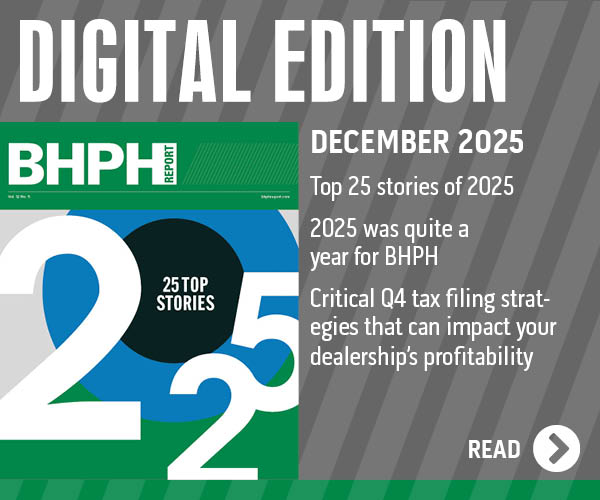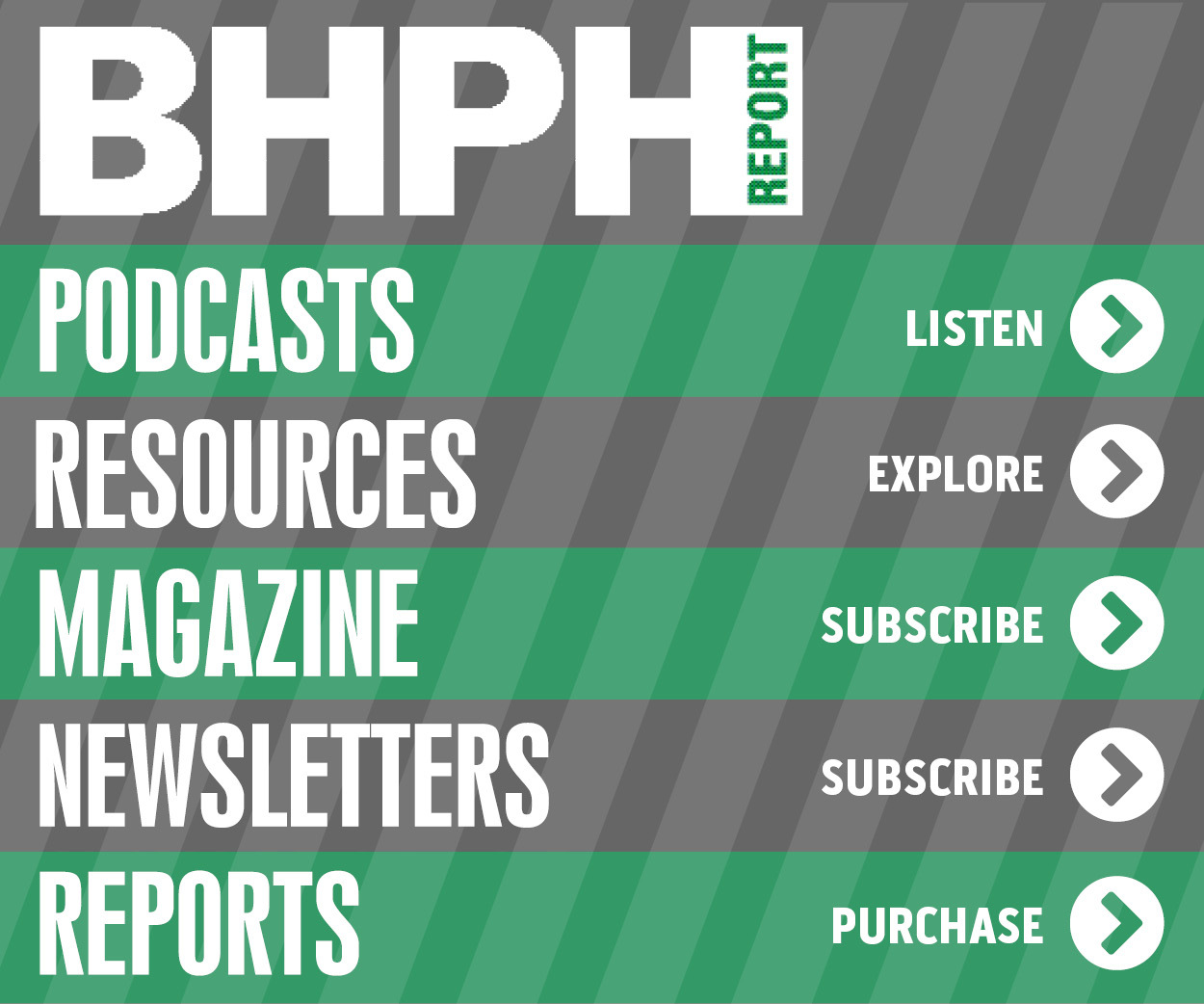COMMENTARY: Why vehicle flexible leases/subscriptions could replace BHPH for franchised and independent dealers

DriveItAway founder and CEO John Possumato, pictured in the middle, engages in conversation during the 2023 Auto Intel Summit in Raleigh, N.C. Photo by Jonathan Fredin.
By subscribing, you agree to receive communications from Auto Remarketing and our partners in accordance with our Privacy Policy. We may share your information with select partners and sponsors who may contact you about their products and services. You may unsubscribe at any time.
In the beginning, vehicles were available to purchase for cash for those with means. Then in 1919, General Motors Acceptance Corp. was created, and car purchases could be financed for the buyer.
In the 1980s, consumer vehicle leasing was introduced, and although leasing took a while to catch on with the public, with a bit of dealer training, now leasing is a big percentage of retail “sales.”
Today, the vast majority of new and used vehicles in the U.S. are financed or leased, and the monthly payment and down payment, not the total price, drive sales.
However, our industry has always had difficulty with those who need personal transportation but have bad credit or very little money to put down. It doesn’t matter how much you might make today, your situation in the past dictates how much cash you need today to get a car.
And so the buy-here, pay-here industry was born to service those folks who couldn’t qualify for traditional finance methods.
I’m not sure when BHPH began, but it gained prominence in the economic turmoil of the 1970s, the decade of oil embargos, recessions and runaway inflation.
Subscribe to Auto Remarketing to stay informed and stay ahead.
By subscribing, you agree to receive communications from Auto Remarketing and our partners in accordance with our Privacy Policy. We may share your information with select partners and sponsors who may contact you about their products and services. You may unsubscribe at any time.
As digital technologies, telematics, internet, artificial intelligence, were all unavailable back then, this was the only alternative for dealers or marginalized customers to enable vital personal transportation.
However, traditional BHPH does have major drawbacks. Just ask any dealer who has to go through the legal process of a repo (where the vehicle, when recovered has usually been trashed), or a consumer that, between payments and repairs, can never seem to get out of the BHPH gerbil wheel to qualify for traditional financing for a new or slightly used vehicle.
The numerous drawbacks are why most franchised dealers are hesitant to start a BHPH operation at a new-car store. In addition to the challenges of managing a different operation, BHPH does very little to transform a BHPH consumer into a traditional creditworthy customer, thereby hindering the growth of franchised dealer market share.
It’s 2025, not 1975, and technology and the processes and procedures that are available today introduce revolutionary changes that can enable a credit or cash challenged buyer, and dealers who want to work with them, to drive a new or late model used vehicle now and ultimately work towards qualifying for a vehicle with traditional financing — a new superior transportation “finance” alternative.
Enter the vehicle “flexible lease” or “subscription.”
Benefits of flexible leases/vehicle subscriptions for dealers (over BHPH)
There are multiple potential benefits for dealers, including:
—All digital transactions: From start to finish inside an app (qualification, signing, stips, payment & collections, tickets and tolls, etc.), the way most buyers would like a transaction to take place but in most all states cannot due to the legal requirements of a sale.
—Risk mitigation: Telematics integrated into digital app, location, mileage, and ignition cut-off integrated with payment, fully monitoring in real time, but few touch points for non-payment procedures; periodic customer conducted condition reports (video) integrated with management dashboard; extra mileage and tickets and tolls monitored and paid weekly; full transparency for both parties — dealer knows the condition, mileage, extra costs in real time, as does the customer to “stay on the rails” to enhance credit reports and help the driver ultimately qualify for a traditional vehicle financing
—Mark to market and vehicle inventory flexibility: While most flexible lease/subscription customers stay in their vehicle an average of 12 to 18 months before a purchase is possible, the dealer monitors the reduction in cost on the vehicle (as driver usage payments reduce the used vehicle price), evaluate used car inventory needs, and, if desired, simply switch the driver into another vehicle, to put the driven vehicle into used inventory for a conventional sale
—Growing market share with a “bankable” customer: Each driver usage payment serves to write down the vehicle cost to the dealer, as, in turn, it enhances the driver’s credit rating, and builds a history to show conventional vehicle finance institutions a “credit worthy” potential buyer, thus each payment brings the driver closer to a conventional purchase with the dealership
—Additional immediate vehicle sales: Some dealer focused vendors (such as Free2move powered by DriveItAway), actually buy the new vehicle from the dealer directly, and take on all operating responsibilities, including the payment and residual risk, for dealer implementation of vehicle flexible leases, which empowers dealers to immediately convert customers who might otherwise not quality for traditional financing while generating incremental vehicle sales; this enables dealers to sell vehicles upfront, seamlessly fitting within their existing sales workflow, with no operational disruption, while still retaining the ability for the sale of the used unit to the driver, or to buy it back for “home grown” used car inventory
Benefits of flexible leases/vehicle subscriptions for customers (over BHPH)
There are multiple potential benefits for consumers, including:
—Drive new or late-model vehicle: Everyone knows that BHPH vehicles are old (sometimes very old), with very high miles. This leads to breakdowns and repairs. And for the customer unreliability in personal transportation and substantial extra expenses to keep the vehicle running, above payment for the vehicle. Alternately, flexible leases or subscriptions are for new or late-model used vehicles, with factory warranties still in place. In fact, when all costs are considered, total cost of ownership is usually less for the driver for a new or almost new vehicle, than with an old BHPH vehicle
—All digital transaction: Yes, same as above, an all-digital transaction not only benefits dealers, but the credit-challenged consumer as well. Most BHPH transactions are not done fully in app or online. Vehicle selection and the entire purchase process requires a lot of “in-person” activity. With flexible leases/subscriptions, the customer can literally do everything in app/online, including vehicle choice, qualification, contract signatures, payment, extra mileage charges, and more — the ultimate in technological convenience
—Risk mitigation: Again, the same benefit as for dealers, but in a different way.
First, as mentioned above, full transparency benefits all customers who truly want to build credit to qualify for conventional vehicle financing and “stay on the rails” with payments — mileage charges and tickets and tolls calculated by the day and paid by the week enhance this ability. As every BHPH dealer knows, the key to a successful experience is never letting a customer get so behind in payment that it is impossible for him/her to catch up.
Second, unlike a BHPH purchase, if circumstances change for the driver, and he/she can no longer make the payments, after the first month, the driver can simply turn the vehicle back in, with no further obligations, and the vehicle can go out to another customer or taken back into dealership used car inventory, whichever is more optimal for the dealer. No adversarial repossession are necessary, as the customer’s motivation is to have the ability to come back to the store for another flexible lease, when their financial condition permits
—Building towards a conventionally financed purchase: This is the largest single benefit/motivator for the credit challenged customer. It is a sad fact that those who are relegated to the BHPH market because of very bad credit, rarely come out of the BHPH cycle, and rarely are offered the chance to build their credit in a new or late model used car. However, with a flexible lease, both customer and dealer are fully aligned, the goal is for the driver to make payments on time and rehabilitate credit to ultimately purchase the vehicle with conventional financing, while driving a reliable quality vehicle
Closing thoughts
Indeed, rarely is there an automotive retailing process that so much benefits both the automotive retailer and the consumer as a flexible lease/subscription-based offering, now enabled through technology and programs only recently available to be used for this win-win opportunity.
How often do franchised dealers, in particular, get to grow market share, and “home grow” their own hand-picked future used car inventory, by enabling more people to enjoy the benefits of “ownership” — “growing the size of the pie” not just trying to get a larger slice?
John Possumato is the founder and CEO of DriveItAway, now partnered with Free2Move, the global mobility provider of Stellantis, to offer a turnkey subscription/flexible lease rental platform for car dealers.


